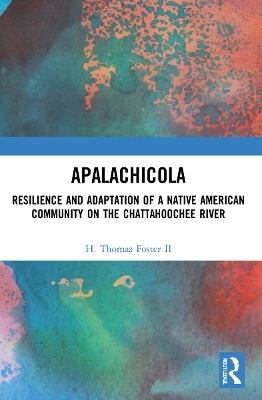
Apalachicola
Routledge (Verlag)
978-1-032-20126-9 (ISBN)
Apalachicola is the origin story of the Creek Indians and how they adapted to a changing environment and shows that specific institutions, subsistence strategies, and social organizations developed as a risk management strategy and a form of resilience. It is unique in its comprehensive and long-term study of a community. It identifies and demonstrates a new way of understanding the development of political institutions and regime change. Incorporating the role of social groups that are under discussed by archaeological studies, the book offers a new and novel understanding of the development of complex societies in the Southeastern United States. It also includes a holistic view of the entire social and economic organizations rather than just an aspect of the economy or politics and shows how this culture developed a society that dealt with an unpredictable environment by distributing risks, knowledge, and authority throughout the society. The social and political organization of these Native American peoples was adapted to a particular environment that was altered when Europeans immigrated to the Americas.
The book is relevant to scholars interested in Southeastern North American archaeology and history, ecological resilience, political change, colonialism, gender studies, ecology, and more.
H. Thomas Foster, II (Ph.D., The Pennsylvania State University) is Professor of Anthropology at The University of Tulsa. His research uses models of economic behavior to understand how humans react to and manage environmental and social variability and how those decisions in turn affect resources in the biophysical environment. As an archaeologist, he has been using the time depth of archaeological and historical data to test models about resilience and adaptation among the Native Americans of the Southeastern United States and Caribbean in response to colonialism and ecological change. He has published extensively on the effects of humans on the environment and how we can use that information to manage modern environmental issues.
Chapter 1: Introduction; Chapter 2: Apalachicola, the "Big Town"; Chapter 3: Origins; Chapter 4: The Landscape Setting; Chapter 5: The Muscogee Way; Chapter 6: Worldview and Organization; Chapter 7: Synthesis and Adaptation; Appendix A: Pottery Types and Descriptions; Appendix B: Radiocarbon Dates for the Region and Study Site, Southeastern United States; Appendix C: Timeline of Documented Events for Apalachicola; Index.
| Erscheinungsdatum | 07.02.2022 |
|---|---|
| Zusatzinfo | 4 Tables, black and white; 39 Line drawings, black and white; 3 Halftones, black and white; 42 Illustrations, black and white |
| Verlagsort | London |
| Sprache | englisch |
| Maße | 156 x 234 mm |
| Gewicht | 453 g |
| Themenwelt | Sachbuch/Ratgeber ► Geschichte / Politik ► Regional- / Landesgeschichte |
| Geisteswissenschaften ► Archäologie | |
| Geisteswissenschaften ► Geschichte ► Regional- / Ländergeschichte | |
| Sozialwissenschaften | |
| ISBN-10 | 1-032-20126-6 / 1032201266 |
| ISBN-13 | 978-1-032-20126-9 / 9781032201269 |
| Zustand | Neuware |
| Informationen gemäß Produktsicherheitsverordnung (GPSR) | |
| Haben Sie eine Frage zum Produkt? |
aus dem Bereich


